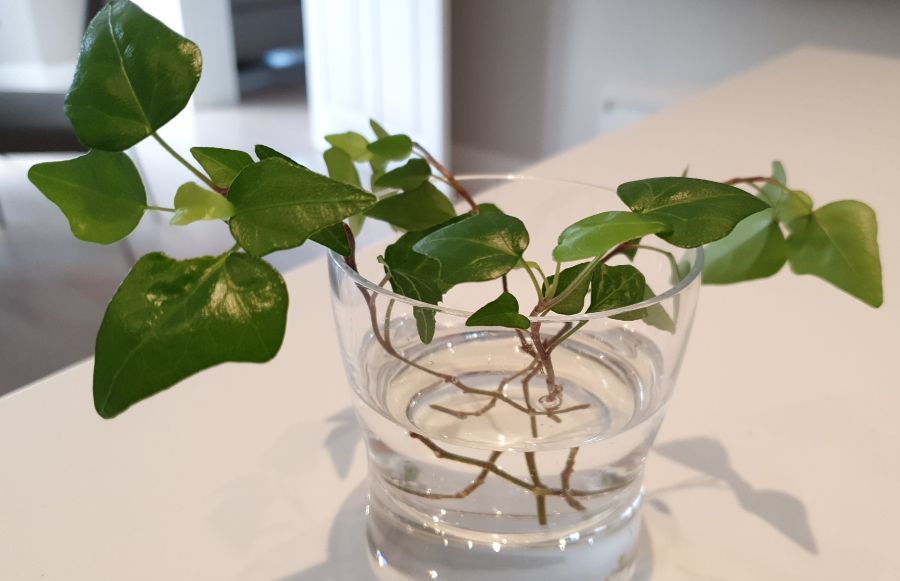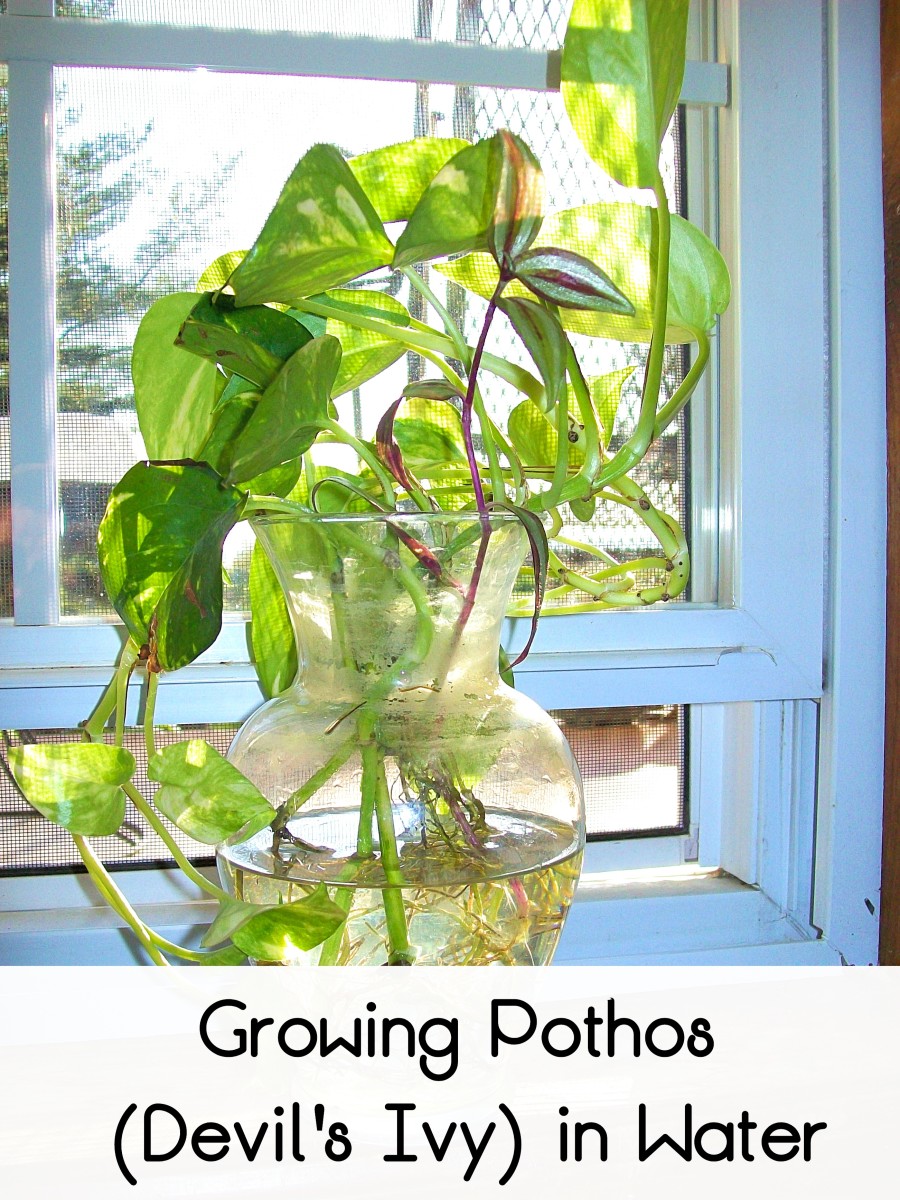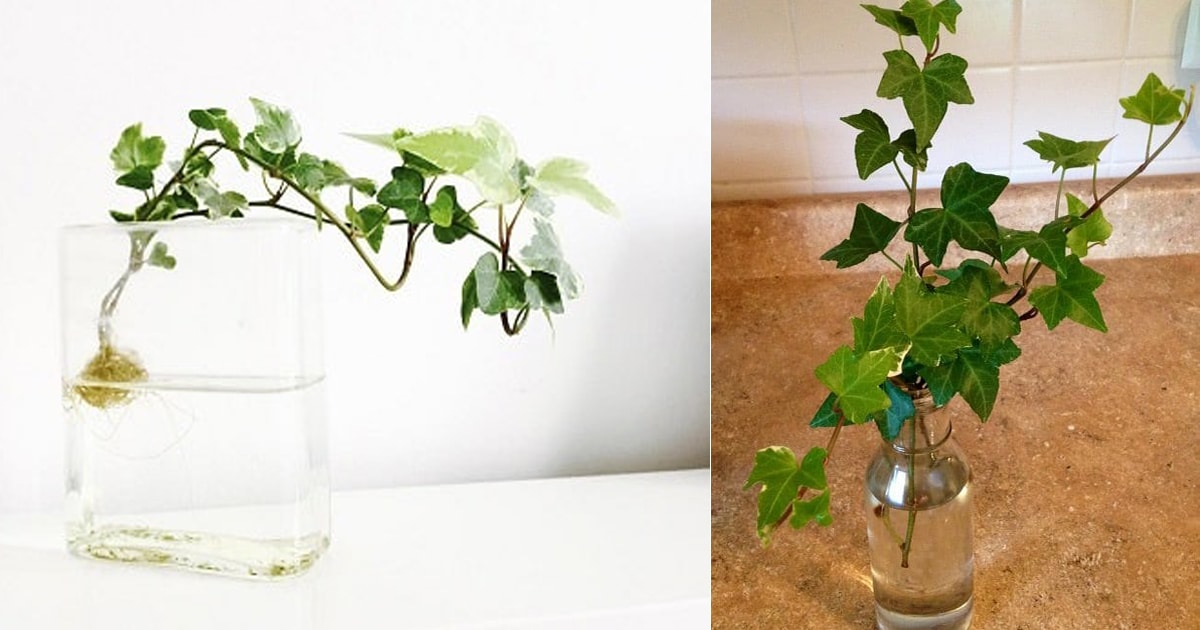When the top inch of the soil begins to dry up, give ivy plants a vigorous soak. If indoors, mist the ivy’s leaves once a week with water to enhance humidity. To maintain the leaves green and prevent root rot, ivy typically needs watering once every seven days, but this might vary according on the region.
The finest watering techniques for growing ivy plants are detailed in the following paragraphs, along with instructions on how to determine the ideal watering frequency for ivy in your house or garden.
Table of Contents
How Often To Water Ivy Plants (Indoors and Outdoors)
Ivy plants are adapted to growing in woodlands and forests with some protection from direct wind and some humidity in well-draining reasonably damp soil.
Although ivy is quite versatile and can thrive in a variety of situations, it prefers soil that is rich in organic matter, consistently damp, and somewhat dries out in between waterings.
Brown leaf edges on the ivy are a symptom of drought stress if the soil entirely dries out or the humidity is too low. Ivy leaves turn yellow and drop off if the soil is too wet or moist.
It’s crucial to replicate the water cycle and the regular soil moisture levels of their natural environment while watering ivy, whether it’s indoors or out.
Ivy plants should receive a generous soak of water, followed by a brief period of soil drying out in the top inch. In the Spring and Summer, you should water your ivy once a week, and in the Winter, once every two weeks.
Whether your ivy is indoors or outdoors, you should wait for the top inch of the soil to dry before watering it.
As the air in our houses can be very dry, especially with air conditioning or other sources of heat in the winter, it is frequently necessary to sprinkle the ivy leaves with water.
Once a week misting helps to prevent water loss from the leaves and provides a microclimate that resembles the ivy’s natural woodland home.
Ivy needs be watered on a regular basis depending on a number of circumstances, including:
- the range of temperatures and humidity in your area.
- The pot or container’s size (smaller pots and containers can dry out much quicker then larger pots).
- Whether the ivy is indoors or outside, in an open, windy area, or in the air current of air conditioning and close to sources of heat.
- the potting soil’s capacity to hold moisture.
Use your finger to feel the top inch of the soil to gauge the amount of soil moisture before deciding how frequently to water your ivy based on the climate and conditions in your particular area. Wait to water if the soil seems wet. The ideal time to water with a generous soak is when the soil feels like it is beginning to dry out.
You may create a regular watering routine to keep your ivy plant healthy indoors or outdoors once you know how long it usually takes for the top inch of your potting soil to dry.
How to Know When Ivy plants Need Water
The first and most evident symptom of drought stress or inadequate watering of your ivy is browning of the leaves.
Low humidity can cause the leaf margins of ivy to become brown, or a lack of water can cause the entire leaf to turn brown, dry, and crispy.
The leaves of the ivy gradually begin to fall if the soil is entirely dry.
As soon as you notice these signs, generously immerse your ivy and shower the leaves. The ivy pot should ideally be submerged in water for around 10 minutes to allow water to completely permeate the soil and provide the roots with the moisture they sorely need.
The ivy can recover from drought stress by misting the leaves once a week.
(Read my article on how to revive a dead ivy plant for further information on how to save ivy plants.)
Symptoms of Ivy Plants that are Over Watered
The root ball of the ivy may have too much water around it if it is watered too frequently, the soil is difficult to drain, or the pots are not draining properly.
Ivy needs soil that drains efficiently since its roots cannot survive in soggy or moist soil. Insufficient oxygen and root respiration due to too much water in the soil interfere with the roots’ ability to absorb nutrients and water, which results in yellow leaves.
The circumstances for root rot, which causes the ivy plant to die back, are also encouraged by disturbed soil.
Although ivy is a resilient plant, if in doubt, keep the soil on the somewhat drier side. Ivy plants recover from droughts far more quickly than they do from periods of overwatering.
(Read my article on why my ivy is going yellow to discover how to save yellow ivy plants.)
Method For Watering Ivy
The frequency of watering an ivy plant can vary depending on the climate, temperature, humidity, and whether it is indoors or outside, but the watering technique is constant.
Give your ivy a good soak, letting any extra water drain out the bottom of the pot.
This method of watering with a thorough soak guarantees that the water has permeated the entire potting soil, making it evenly moist and allowing the roots to absorb the moisture they need.
When the soil is watered too lightly, just the top inch or so of the soil becomes moist. This prevents the water from getting to the roots that are deeper in the soil, where it is needed, and can cause ivy leaves to turn brown, crispy, and dry due to drought stress.
It is possible to replicate the level of soil moisture that ivy plants generally experience in their natural woodland habitat by watering deeply enough to ensure that all of the potting soil is continually damp.
Well Draining Potting Soil Prevents Ivy Dying of Over Watering
Ivy must be planted in the suitable, well-draining potting soil to avoid root rot brought on by excessive moisture around the root ball or by soils with sluggish drainage in order to maintain a healthy plant.
Plant ivy in 3 parts regular potting soil to 1 part perlite for improved drainage and soil structure for optimal results.
Since ivy is resilient and versatile, it can grow in nearly any decent potting soil, but adding perlite keeps the soil porous so that water can permeate correctly and oxygen can get to the roots for root respiration.
Instead of having a loose structure, if the soil is excessively compacted, water may collect around the roots of your ivy and obstruct oxygen, causing the leaves to become yellow and the ivy to wither.
The ideal moisture balance for ivy plants may be easily maintained with the correct soil mix, and overwatering is avoided, keeping your plant healthy.
Water Ivy Plants in Pots With Good Drainage
The easiest way to water ivy plants is to soak them thoroughly so that any extra water drips out of the bottom of the pot, ensuring that the soil is evenly saturated and that all of the roots have access to the moisture they need.
If your ivy plant is in a pot without drainage, water will collect around the roots, leading to root rot and the death of your ivy plant.
In your plant planter, water may still collect around the roots if
- Roots or compacted soil obstruct the drainage opening in the bottom of the pot. It is worth checking to see whether the hole in the base needs to be cleared if you notice that your soil is draining slowly to allow water to properly escape.
- trays and saucers beneath your pots Use trays or saucers underneath your plant pots to stop water from leaking into your house, but make sure to remove them frequently to avoid water buildup that would make the soil too wet for your ivy plant.
- outside pots that add style. Ivy plants are occasionally offered in beautiful outer pots without drainage holes in the base, which stops water from escaping and keeps the soil moist, causing root rot. To avoid this, either frequently empty the pot of water or plant in a pot with drainage holes in the base.
Key Takeaways:
- Every seven days during the period of active development in the spring and summer and every ten days in the winter, give ivy plants a full bath. Once a week, mist the leaves with water to enhance humidity and prevent water from evaporating from the ivy’s leaves.
- To avoid root rot and to replicate the soil conditions and moisture levels of the ivy’s natural environment, ivy plants should be planted in well-draining potting soil that has ideally been treated with perlite for enhanced drainage.
- Ivy should be grown in containers with drainage holes at the bottom to avoid standing water damaging the roots.
- Ivy plant leaves that are not given enough water turn brown, dry, and crispy, while those that are given too much water turn yellow. When the top inch of soil seems dry, give ivy plants a good soak. Ivy plants do best with weekly watering, whether they are indoor or outdoor plants.
FAQ
Can you grow ivy in just water?
Ivy is a fantastic plant for growing in water. The plants are robust and do well in a vase or water-filled jar.
Can vines grow without soil?
Plants can indeed grow without soil, but they are unable to do so without the nutrients that soil offers. Plants require a base, nutrition, defense against extreme temperatures, a consistent supply of moisture, and oxygen surrounding the roots. Without soil, it is still possible to offer essential elements for plant growth.
Does ivy need sun or shade?
Ivy cultivars generally thrive in bright, indirect sunlight. Low to medium light is tolerated, although growth is stunted, and variegated specimens may turn completely green. Give a variegated ivy lots of light to keep its vibrant color.
Can you grow ivy without soil?
Plants require a base, nutrition, defense against extreme temperatures, a consistent supply of moisture, and oxygen surrounding the roots. Without soil, it is still possible to offer essential elements for plant growth. In a vase filled just with water, many of us have grown ivy, sweet potatoes, and other plants.
How often do you water an ivy?
5 to 7 days every week



